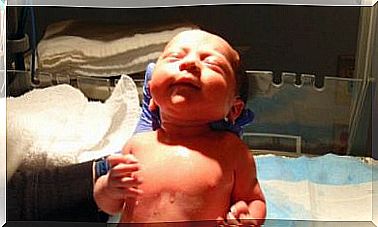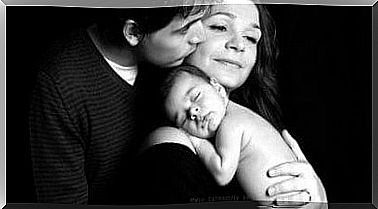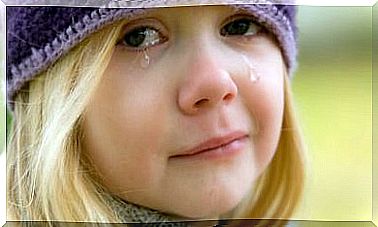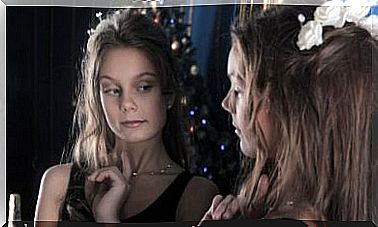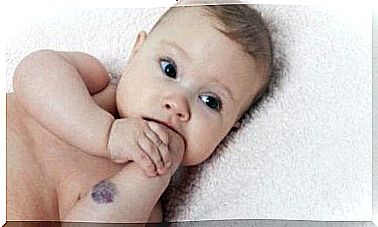Recognize The Different Types Of Birthmarks

Do you know the different types of birthmarks and can you identify them? Read on to learn more about it.
Moles are scientifically known as melanocytic nevus. These are spots on the skin that have different colors and shapes.
It should be noted that they are present in all people. Since shape and color usually vary, it is important that you can tell the difference between different types of moles . Because they are not all benign.
It is estimated that children have an average of 10 birthmarks on their skin at birth. That number is relatively low. People with lighter complexions are also more prone to these spots.
Birthmarks can grow, change, or even go away. It all depends on care, genetic factors, and changes in health. This is because birthmarks are changes in tissue.
With these considerations in mind, in today’s article we’d like to give you a list of the different types of birthmarks. We also discuss how you can recognize and identify these.
In this way, you can take care of your child’s skin from an early age. You can also tell your child to inform you about any observed changes or peculiarities.
The Different Types of Birthmarks: How to Identify Them
There are some concerns you should know about moles before evaluating their physical characteristics. Healthy birthmarks or general nevi are asymptomatic. This means they shouldn’t cause any of the following ailments:
- itching
- Burn
- Oozing
- Swelling
Plus, the skin around them won’t turn red or pale either.
This description refers to a healthy birthmark. And this can give you an idea of how to tell if your child’s skin mark is abnormal. We then focus on the shape and color of birthmarks.
shape
Birthmarks have a circular appearance with very defined edges. However, they can also be oval in shape. The diameter is usually no more than 5 millimeters, and the estimated maximum size is roughly similar to that of a pea.
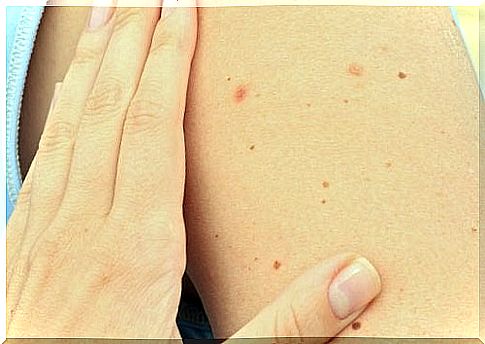
There are two types of birthmarks, depending on the shape:
- Flat birthmarks. They are usually the most common.
- Raised birthmarks
Traditionally, it is believed that if a birthmark has an obvious surface or is growing, it may represent melanoma or some other problem. However, this consideration does not apply.
However, abnormal moles can have irregular shapes. It is therefore important that you take your child to a dermatologist who can determine the actual nature of the mole.
Birthmarks should not be removed or touched in any way. Unless they itch, sting, or oozing. In this case, a specialist will perform an outpatient procedure.
colour
In terms of color, birthmarks are usually brown. But there are also black, blue and red birthmarks, such as the so-called cherry angiomas.
The color of birthmarks can also be an indication of changes. However, as mentioned earlier, there is nothing to worry about if it is theoretically asymptomatic.
A person’s skin tone is also related to the color of moles. For example, it has been found that Caucasian and blonde people have moles with shades between pink and light brown.
Meanwhile, people with dark hair or complexions have dark brown and black nevi.
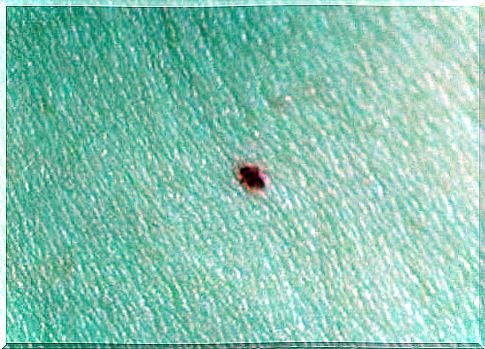
How to spot anomalies
It is very rare for a healthy birthmark to turn into melanoma. Exceptional conditions must exist for this.
It is also true that certain people are more prone to this condition. This particularly affects people with very pale skin, people who expose themselves to the sun without protection, or those who have more than 50 moles.
It’s important to note that knowing if there are any changes in your child’s birthmarks is a good thing, but only a dermatologist has the ability to determine the exact condition of the birthmark. Likewise, he can also point out the type of care a mole needs.
If your child has more than ten moles on their skin, get routine checkups with a specialist doctor for proper advice regarding the skin marks.
In summary, it can be said that birthmarks in children are in most cases benign. However, changes are directly related to reckless and unprotected exposure to the sun.
Prevention and the right skin care are therefore always good allies for the health of children’s skin.


